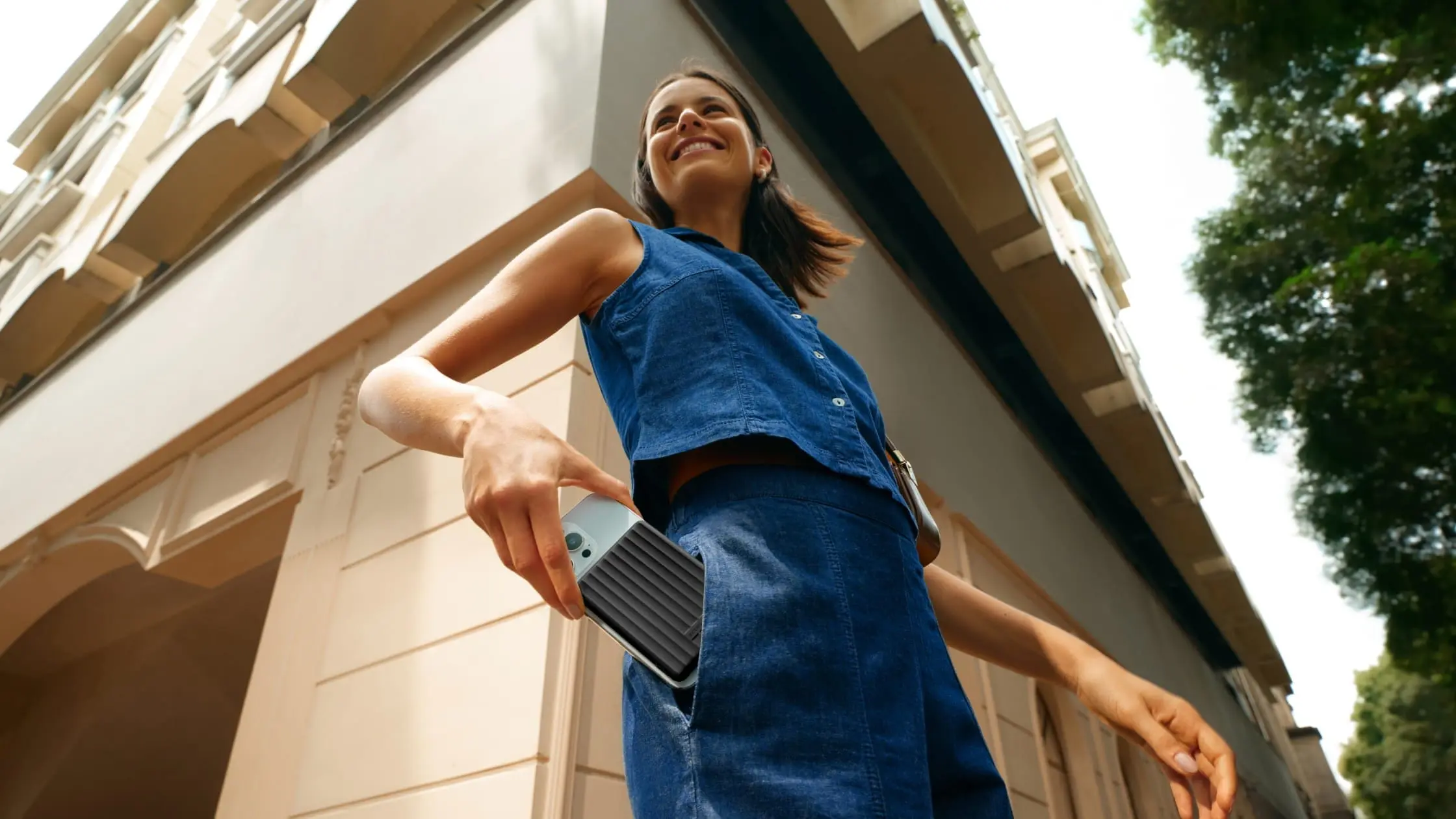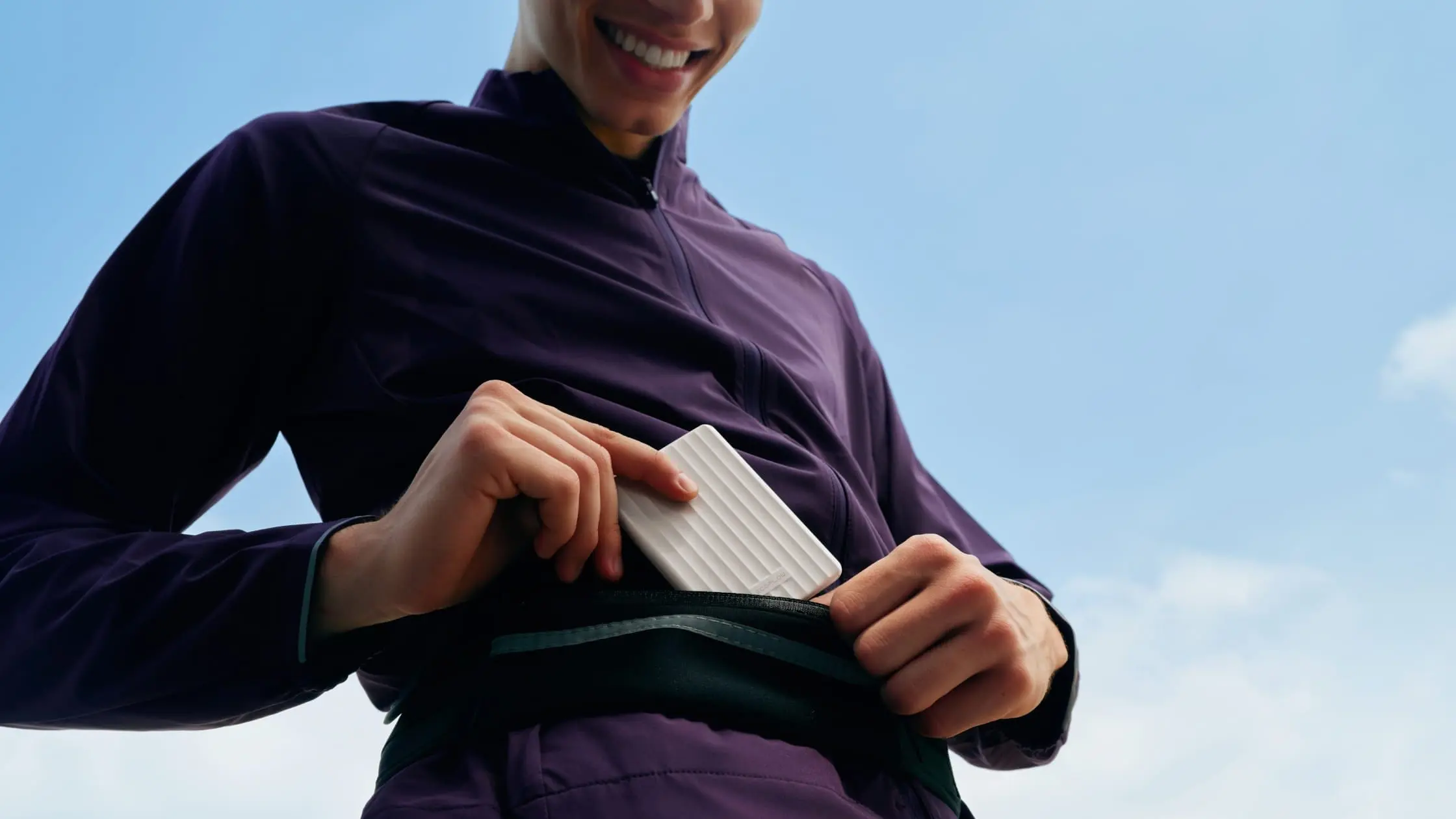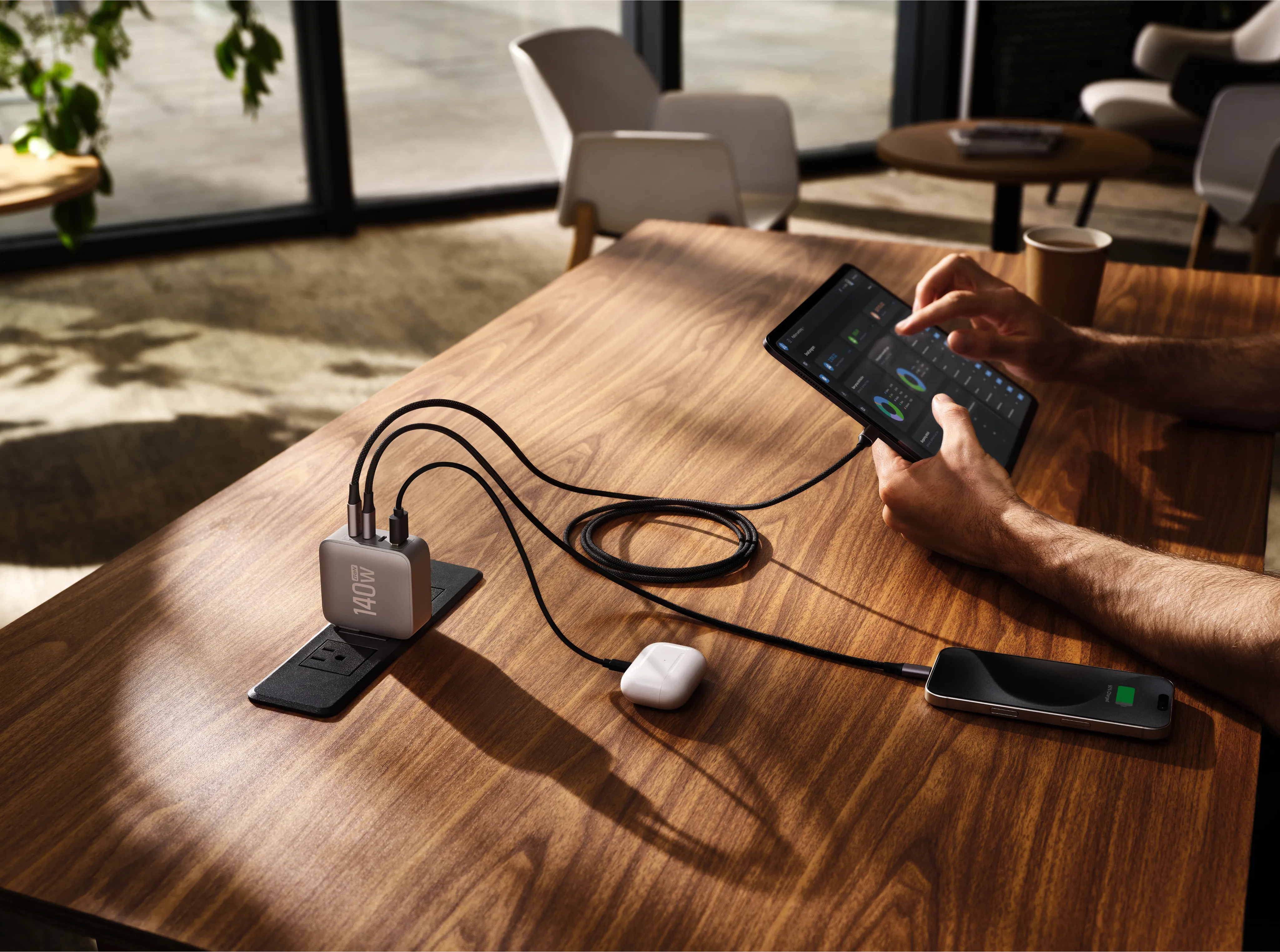iPad Wireless Charging Explained: How It Works and the Best Charging Solutions
The iPad has become an essential companion for students, professionals, and creators across Canada. Whether you’re sketching in a cozy Vancouver café, joining a virtual meeting from your Toronto home office, or following a digital map through the Rockies, keeping your iPad powered is crucial. While wireless charging has transformed the way we charge our iPhones, the iPad still relies on traditional cables, at least for now.
This guide breaks down how wireless charging technology works, why iPads don’t yet support it natively, and the best alternative charging options available today. From fast wired chargers to innovative “pseudo-wireless” accessories, we’ll help you build a setup that keeps your iPad ready for whatever your day or your next adventure brings.
What Is iPad Wireless Charging Technology?
To understand how to achieve a cleaner, cable-free charging setup for your iPad, it helps to start with the fundamentals of wireless power transfer and why it hasn’t yet reached Apple’s tablet lineup.
How Does Wireless Charging Work?
Wireless charging, most commonly based on the Qi standard, uses electromagnetic induction to transfer energy without direct contact. Inside the charging pad, a transmitting coil generates an alternating magnetic field. When a compatible device, such as an iPhone, is placed on top, a receiving coil inside the device converts that magnetic field into electrical current, which charges the battery. This method is simple and cable-free, offering a cleaner, more convenient way to power devices. However, for the process to work efficiently, the pad and the device must be properly aligned and remain in close proximity throughout charging.
Does the iPad Have Wireless Charging?
The short answer for now, is no. While Apple has embraced wireless charging and MagSafe technology across its iPhone lineup, no current iPad model includes built-in wireless charging capability. If you place your iPad on a standard Qi charging pad, it won’t respond, as it lacks the internal coil needed to receive power through induction. Similarly, MagSafe chargers, designed specifically for iPhones, won't work with iPads due to the same limitation. This distinction is important to keep in mind when exploring charging solutions since the iPad still relies on wired USB-C or Lightning connections for power delivery.
Why Apple Hasn’t Added Wireless Charging to iPads Yet
Apple’s reluctance to include wireless charging in its iPad lineup isn’t a matter of oversight, it’s a result of complex engineering challenges that the company hasn’t yet fully overcome.
Aluminum Back
Unlike the iPhone’s glass back, which allows electromagnetic fields to pass through with ease, the iPad’s aluminum body blocks this energy transfer. The metal casing acts as a shield, disrupting induction and making efficient wireless charging nearly impossible.
Larger Battery
Because iPads have much larger batteries than iPhones, they need higher power delivery to charge efficiently. Current Qi wireless charging technology can’t supply enough wattage, making it too slow and impractical compared to fast USB-C Power Delivery charging.
Heat Management
Wireless charging at high power levels produces heat, a challenge in any device, but especially in a large, flat tablet. Excess heat can affect performance and shorten battery lifespan, making thermal control a major hurdle for Apple’s design team.


Choosing the Best Charging Solutions for iPad Setup
Since true wireless charging isn’t yet an option, the most effective approach combines high speed wired charging with “pseudo wireless” accessories that offer similar convenience. Imagine a clean, organized workspace in a busy Montreal office or a mobile setup on the go, efficient power management keeps your iPad ready for anything.
Key Features to Consider
When selecting a charger or accessory for your iPad, especially during power hungry Canadian winters, keep these essentials in mind:
High Wattage (60W or More): Choose a charger that delivers at least 60 watts of power to ensure fast, efficient charging, particularly for iPad Pro models.
Power Delivery (PD) Support: Look for USB-C chargers that support Power Delivery (PD) to guarantee safe, optimized charging speeds.
Portability and Size: If you travel often, say from Calgary to the coast, a GaN (Gallium Nitride) charger offers high output in a compact, lightweight form.
Multi-Port Capability: A charger with multiple ports lets you power your iPad, iPhone, and MacBook simultaneously, reducing clutter and keeping your workspace tidy.
Best Charging Solutions for Desk and Travel
For the fastest and most stable power delivery, a high wattage wall charger remains the gold standard for iPad users.
Pro Tip: For top tier charging performance across multiple devices, consider a high output GaN charger such as the EcoFlow RAPID Pro Charger (140W, 4 Ports, GaN). With its exceptional 140-watt capacity and four charging ports, it can power your iPad Pro at full speed while simultaneously charging your phone, laptop, or other accessories, all from one compact unit. Whether you’re editing designs in a downtown Toronto workspace or catching up on projects from a remote cabin in the Rockies, this level of dependable power ensures your iPad never runs out of charge when you need it most.
| Charging Method | Pros | Cons | Recommended For |
|---|---|---|---|
| Wired PD (GaN) | Fast, stable, high wattage | Requires cable | Office & travel |
| Qi Receiver Pad | True wireless | Slow, less efficient | Occasional users |
| Smart Connector Dock | Port-free, elegant | Limited models | Desk setups |
| Power Bank (GaN + MagSafe) | Portable | Limited capacity | Outdoor or travel |
Alternative Ways to Achieve Wireless Charging on iPad
Although iPads don’t yet support true wireless charging, several clever accessories and third party innovations can deliver a similar, near wireless experience.
Using Charging Adapters and Receiver Pads
The simplest way to “add” wireless charging to your iPad is by using a Qi receiver pad.
How it Works: A thin receiver patch plugs into your iPad’s USB-C or Lightning port and attaches to the back of the tablet. Inside the patch is a small coil that enables electromagnetic induction when placed on a standard Qi charging mat, allowing the battery to charge without a cable connection.
Consideration: This method offers genuine induction-based charging but is less efficient than wired power. It also occupies the iPad’s charging port, which means you can’t use other accessories or wired connections while charging.


Wireless Power Banks with iPad Support
For those frequently on the move, whether on a long drive across the Trans-Canada Highway or during a busy workday, a wireless power bank is a must have accessory. Look for models that support magnetic alignment, allowing for a more convenient, cord-free charging experience.
Pro Tip: The EcoFlow RAPID Mag Power Bank (5,000mAh, 7.5W, Magnetic Charging) is a great example. While it’s primarily designed for magnetic iPhone charging, it’s also perfect for wirelessly powering accessories like AirPods or maintaining a magnetic attachment for add-ons. For your iPad, its USB-C output ensures fast, secure wired charging when needed, keeping your device powered and your display bright, whether you’re travelling from Saskatoon to Edmonton or working remotely from a coffee shop.
Magnetic Stands and Charging Stations
Some manufacturers now offer custom iPad cases that include a built-in charging receiver, designed to work with a matching magnetic stand. When the iPad is attached, it snaps securely into place, and charging begins automatically through hidden pins or an integrated coil unique to the case and stand setup. The result is a clean, seamless experience that closely mimics Apple’s MagSafe system, allowing you to charge and use your iPad hands-free at the same time, whether for drawing, video calls, or watching content.
Smart Connector Charging Docks
Many iPads include a Smart Connector, the three small metal dots located on the back or side of the device, originally designed to power accessories like Apple’s Smart Keyboard. However, some third-party charging docks now take advantage of this connector to deliver power directly to the iPad. This approach is both robust and fully port-free, bypassing the USB-C or Lightning port entirely. Simply place your iPad onto the dock, and charging begins instantly. It’s a clean, efficient solution that combines convenience with reliability, making it ideal for desk setups or continuous use at home or in the office.
Future of Wireless Charging for iPads
The world of charging technology is advancing quickly, and it’s becoming increasingly likely that true wireless charging for iPads will arrive in the near future. As Apple continues to refine its hardware and explore new materials, the iPad seems poised to join the wireless charging ecosystem already embraced by iPhones and other Apple devices.
Apple’s Potential MagSafe Integration for iPads
Reports suggest that Apple is testing glass or hybrid backs for future iPad Pro models to enable full MagSafe compatibility. This change would allow for stronger magnetic alignment, faster wireless power transfer, and improved charging efficiency, all while maintaining Apple’s signature sleek design. MagSafe integration would bring the same cable-free convenience iPhone users enjoy, finally extending it to the iPad lineup.
Advancements in Long-Distance Wireless Charging
Imagine recharging your iPad just by being in the same room as a transmitter, no cables, no mats. While this long distance, over the air charging technology is still in development, it holds exciting promise. As it matures, it could eliminate the need for physical charging points altogether, turning wireless charging into a truly passive, effortless experience.
Reverse Wireless Charging Capabilities
Another innovation on the horizon is reverse wireless charging, where the iPad could act as a power source for smaller devices. Picture being on a camping trip in Banff National Park and topping up your AirPods or Apple Watch by simply placing them on the back of your iPad. This feature would transform the tablet into a portable charging hub, adding yet another layer of versatility to one of Apple’s most multifunctional devices.


Conclusion
Although true wireless charging hasn’t yet made its way to the iPad, today’s ecosystem of high speed wired chargers and innovative “pseudo wireless” accessories provides impressive flexibility and convenience. Whether you’re using a Smart Connector dock for a clean, cable free desk setup or a high wattage GaN charger like the EcoFlow RAPID Pro for reliable, multi-device power, it’s easier than ever to keep your iPad running efficiently. As technology continues to evolve, particularly with advancements in MagSafe and GaN charging components, the vision of fully seamless, wireless iPad charging is no longer a distant dream but a rapidly approaching reality.
FAQ
Does the iPad have wireless charging?
No, iPads currently do not support built-in wireless charging. Every model must still be charged through its USB-C or Lightning port, or via the Smart Connector using a compatible accessory. While wireless technology exists for iPhones, allowing you to wirelessly charge phones, it hasn’t yet been introduced to the iPad lineup.
Can I use a wireless charger for iPad Pro?
Not directly. The iPad Pro doesn’t include built-in wireless charging capability, so placing it on a standard Qi charging pad won’t work. However, you can enable wireless charging by using a third party accessory, such as a Qi receiver adapter that plugs into the USB-C port or a wireless charging case designed for tablets. These solutions allow the iPad Pro to charge on a wireless pad, though charging speed and efficiency are typically lower than with a wired USB-C connection.
Is wireless charging safe for iPads?
Yes, when using certified, high quality accessories and reputable charging pads, wireless charging is generally safe. However, because iPads require higher power levels than smaller devices, wired charging remains the most efficient and reliable option. Chargers built with advanced technology like GaN (Gallium Nitride), such as the EcoFlow RAPID Pro Charger, offer enhanced safety features, including over current and over voltage protection, making them ideal for maintaining your iPad’s long-term battery health while delivering fast, stable power.
What’s the best wireless iPad charger for travel?
For a near wireless charging setup on the go, pair a compact, high power GaN wall charger with a magnetic charging stand or case that connects through the Smart Connector. This combination offers efficient charging without the cable clutter. For travel emergencies, a magnetic power bank is an ideal companion, it provides convenient wireless top ups for smaller devices like AirPods or iPhones and delivers fast wired USB-C charging for your iPad when you need a full recharge away from an outlet.